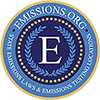Last updated on April 26th, 2018
Any vehicle that is going to be driven on a public road in Nevada must meet state minimum car insurance requirements. These requirements consist of maintaining minimum levels of coverage that include $15,000 in per person bodily injury coverage, $30,000 in per accident bodily injury coverage and $10,000 in property damage liability coverage. As a tort state when an accident occurs in Nevada fault is going to be placed on a single driver and the at-fault driver will be held financially responsible for all injuries and damages resulting from the accident. Minimum coverage levels are intended to make sure that every motorist has the ability to provide a certain amount of financial compensation if they are involved in an at-fault accident. Although these are the minimum liability requirements for most Nevada residents the state requires that motor carriers, which is defined as individuals or businesses that transport property or passengers, obtain higher amounts of liability coverage in order to operate legally. Any resident that owns ten or more vehicles may be eligible to self-insure the vehicles that they own, meaning that they will not have to meet state minimum liability requirements.
The state of Nevada is arguably one of the most efficient states in terms of handling car insurance and vehicle registrations. Much of the insurance issues that come to light in the state of Nevada can easily be solved on the internet or through a simple phone call to the DMV.
As of 2011, before a driver can register a vehicle in the state of Nevada they must first obtain an evidence of insurance card which is issued by a state licensed insurer. An evidence of insurance card is required whenever a resident wishes to make any sort of registration changes, including first time registration, registration renewals and even registration reinstatement. The evidence of insurance card is also required by law to be carried in the insured vehicle at all times and must be presented to a law enforcement officer any time proof of insurance is requested.
Perhaps the most efficient part of Nevada’s car insurance system is its insurance verification program, which has recently evolved into Nevada LIVE, or Nevada Liability Insurance Validation Electronically. Nevada LIVE is one of the most modern and complex insurance validation programs in the entire country. Nevada LIVE basically allows the DMV and insurance companies to communicate securely via the internet. When the DMV wishes to validate the car insurance of a particular driver or vehicle they can send a request to the insurance company and will receive an instant response regarding the status of an insurance policy. Every time a vehicle is registered in Nevada the DMV will use Nevada LIVE to instantly validate the insurance status of the vehicle. If the insurance status cannot be validate the vehicle will not be allowed to be registered. What sets Nevada LIVE and its management of the Nevada car insurance system apart from other similar programs is that in addition to allowing communication between the DMV and insurance companies Nevada Live can also be used by Nevada motorists as well. Individuals can use Nevada Live to check their registration status, update their insurance information if they have recently changed policies and submit a verification response after an insurance inquiry by the DMV. In most other states drivers would have to spend a significant amount of time calling back and forth to the DMV and the insurance company to get any of these things accomplished but with Nevada LIVE it is as easy as a few clicks of the mouse.
Thanks to Nevada LIVE, the state has a much easier time tracking down and penalizing uninsured drivers and it also makes the state’s no-grace period policy that much more effective. While many states allow residents to have a grace period if car insurance lapses Nevada requires that state residents maintain continual coverage on any vehicle in their name. Because of this no lapse policy the way in which Nevada car insurance cancellations should be handled is very rigid. If car insurance on a vehicle registered in the state is canceled because the vehicle is no longer in use the vehicle’s registration must be canceled beforehand. If car insurance is canceled because the vehicle is sold the registration must first be canceled and the license plates should be removed. If a driver in Nevada is caught without car insurance or allows their car insurance to lapse they will most likely have their registration suspended and will be required to pay a $250 fee in order to have it reinstated. Drivers cited by a law enforcement officer in Nevada for driving without insurance will also have their license suspended and will be required to obtain SR-22 insurance coverage in order to drive legally after their license is reinstated.

No comment yet, add your voice below!